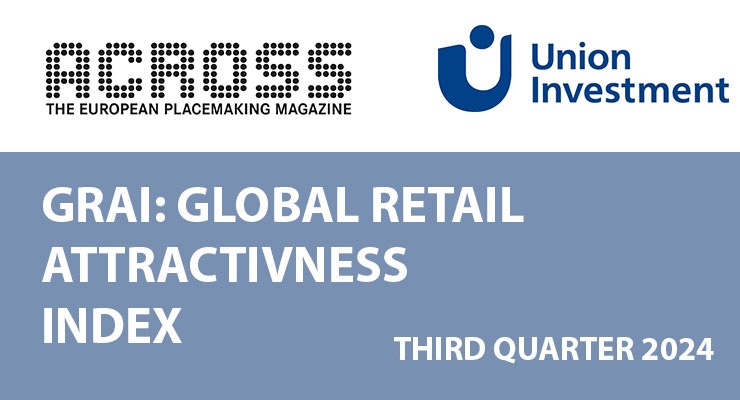The positive trend in European retail markets is becoming more entrenched. In the third quarter of 2024, the Global Retail Attractiveness Index (GRAI) for Europe stood at 114 points, 1 point higher than in the previous year (Q3 2023: 113 points). In eight of the European markets covered by the Union Investment and GfK retail index, the index showed moderate to substantial gains. In two other markets, readings stabilized at around the same level as in 2023. The greatest rises were seen in Sweden, which added another 8 points, and the Czech Republic, which gained 6 points. Readings declined slightly in France and Belgium (minus 3 points each) and Denmark (minus 4 points). The biggest losses were recorded in Finland, which slumped by 13 points.
The top three in the EU-15 index are now Poland (136 points), the Czech Republic (126 points), and Portugal (121 points), followed by Spain and Italy on 118 and 116 points respectively. With 114 points, the German retail market reached an average level for Europe and now comes 6th in the country ranking (last year: 7th place), weighed down by the gloomy mood among retailers and subdued labor market data. Currently, the worst performer in Europe is Finland (89 points), followed by Denmark (90 points), Austria (94 points) and Sweden (96 points).

“Consumer sentiment is continuing to improve across all countries. Retailer sentiment, meanwhile, has dipped slightly, and the labor market indicator has declined. These opposing trends are preventing the EU-15 index from fully reflecting the comeback of European retail markets despite the new record high,” said Markus Diers, Head of Asset Management Retail at Union Investment.
Compared with the same quarter of the previous year, the mood among European consumers has improved by 8 points and now stands at 95 points. The labor market indicator (133 points) is down 3 points. Retail sales (138 points) remained essentially unchanged from the third quarter of 2023.
Overseas regions are stable but still have catch-up potential
While European retail markets have found their way out of the crisis, North American markets are underperforming. But the Asia-Pacific region, in particular, continues to lag significantly behind Europe. The GRAI’s North America index improved by 1 point during the year and stood at an average of 98 points at the end of the third quarter of 2024. The retail index in Asia-Pacific also increased by 1 point but remains below average at 95 points. Thus, the gap to the EU retail index decreased slightly to 19 points.
The slight gain in North America was primarily driven by improved retail sales (plus 4 points). Conversely, consumer sentiment adversely impacted the index (58 points; minus 7 points). A slight upward trend in retailer sentiment (99 points; plus 2 points) was seen in the Asia-Pacific region. However, the weak labor market (97 points; minus 8 points) negatively affects the overall picture.
The winners in the two overseas regions include the US (plus 2 points), Australia (plus 2 points) and Japan (plus 4 points). Canada (minus 5 points) and South Korea (minus 6 points) experienced the most significant decline over the year. The Canadian retail market is struggling and has retained its bottom place in the GRAI’s global country ranking.
Click to enlarge
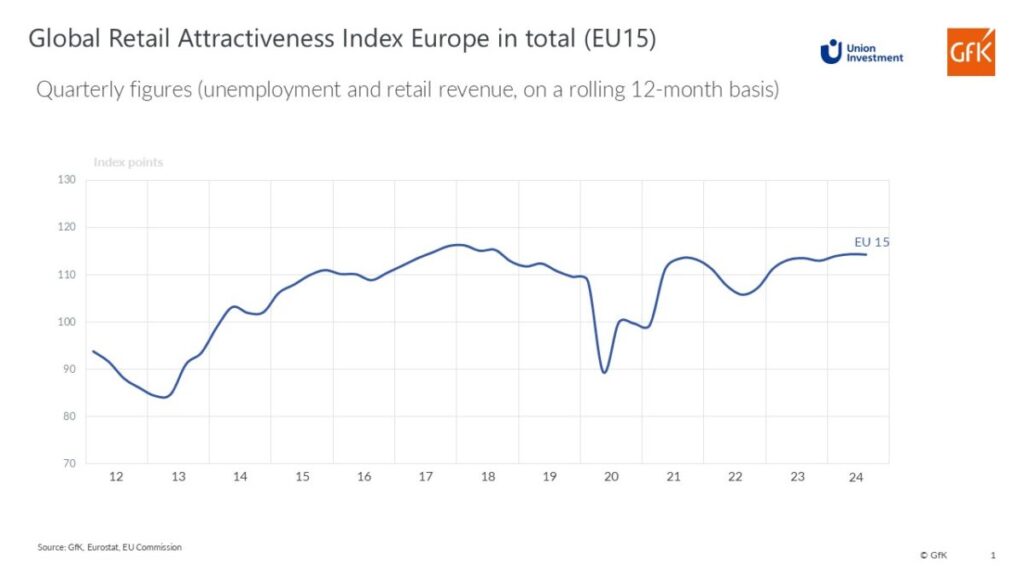
Key Facts
The Retail Index for Europe (EU 15) continues its positive trend in the third quarter of 2024. The indicator has 114 points. This is a slight increase of one point compared to the previous year.
On the one hand, consumer sentiment continues its positive trend, rising by 8 points compared to the same quarter of the previous year (95 points). On the other hand, retail sentiment (95), with 3 points less, and the labor market (133), with a decline of 3 points, show a negative direction. With growth of +1 point, retail sales are almost unchanged compared to Q3 2023.
In terms of the level of the Retail Index, Poland (136 points), the Czech Republic (126 points) and Portugal (121 points) are currently at the top at country level, followed by Spain and Italy with 118 and 116 points respectively. Bringing up the rear in Europe are Finland (89 points), Denmark (91 points), Austria (94 points) and Sweden (96 points).
The largest increases were recorded by Sweden with +8 points, followed by the Czech Republic with +6 points. Finland (-13), Denmark (-4) and Belgium (-3) suffered losses.
Click to enlarge
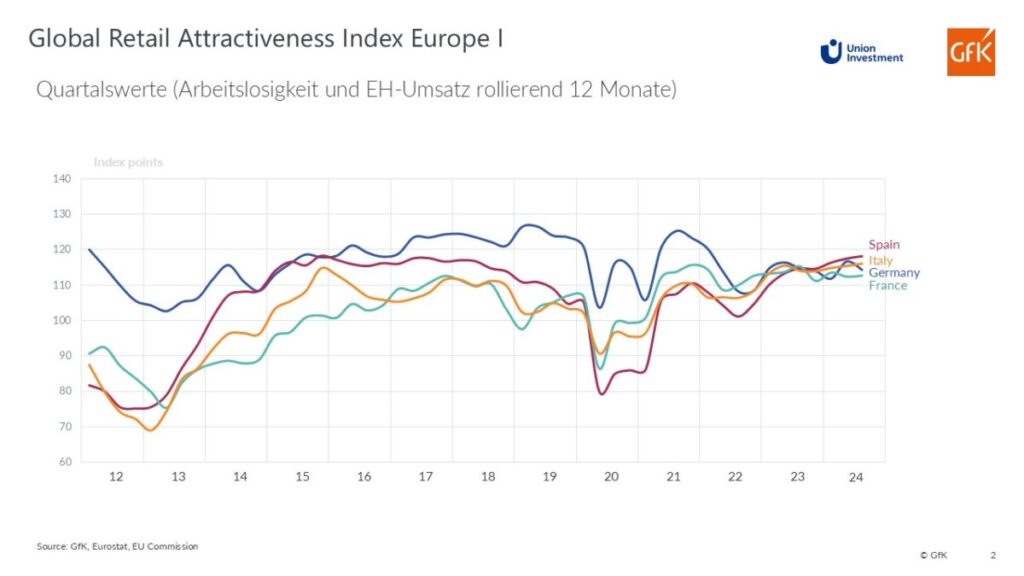
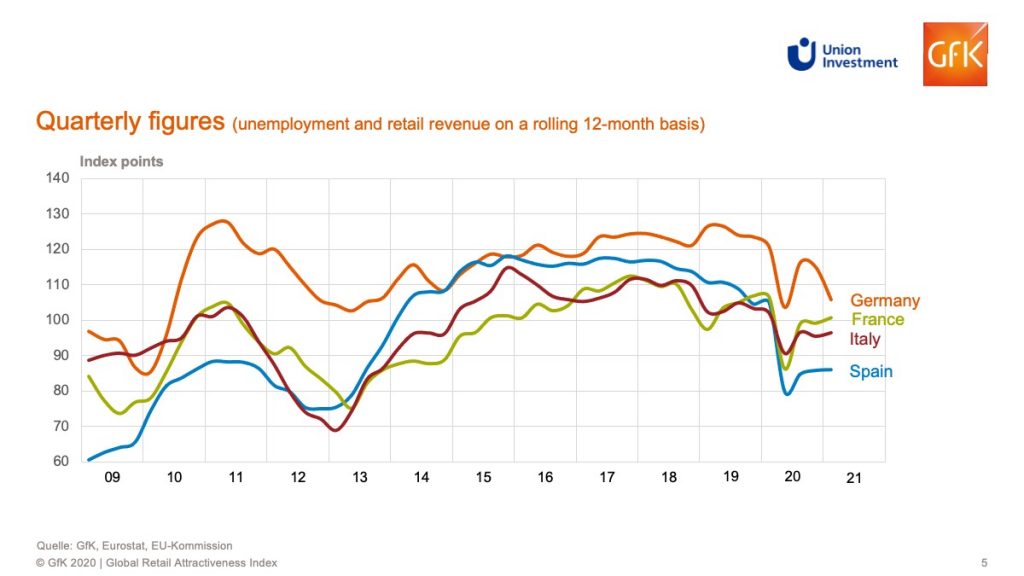
Click to enlarge
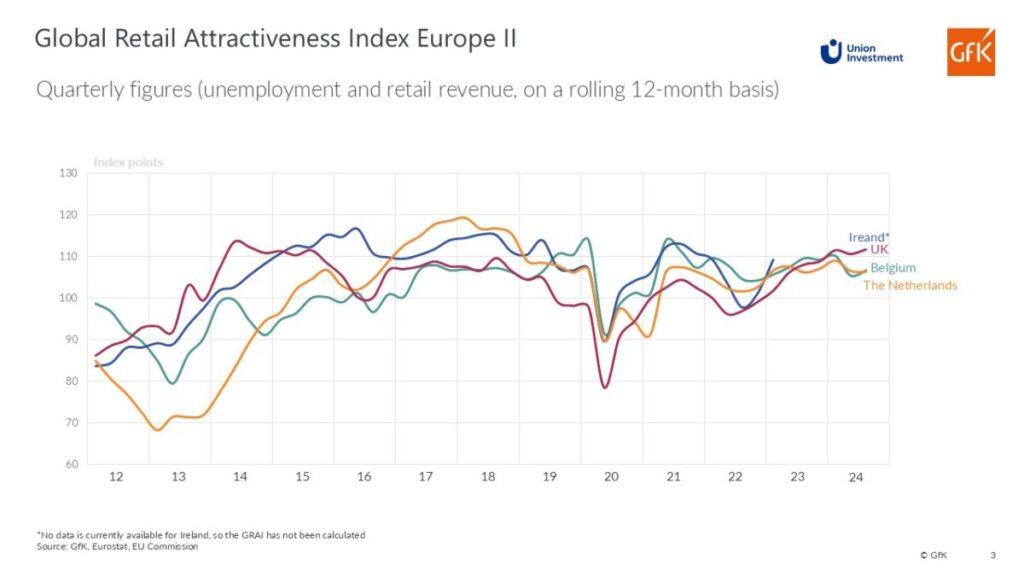
Click to enlarge
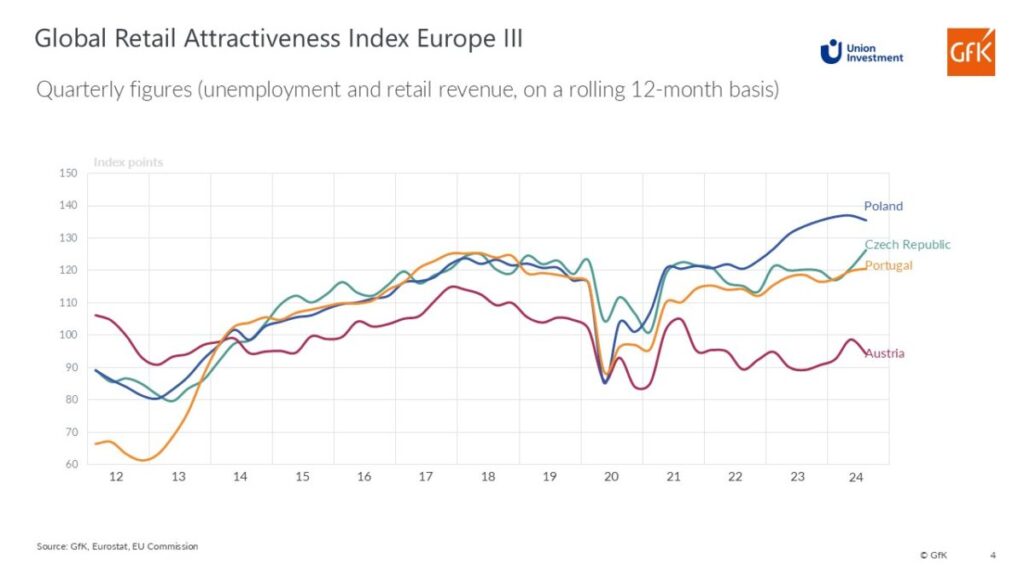
Click to enlarge
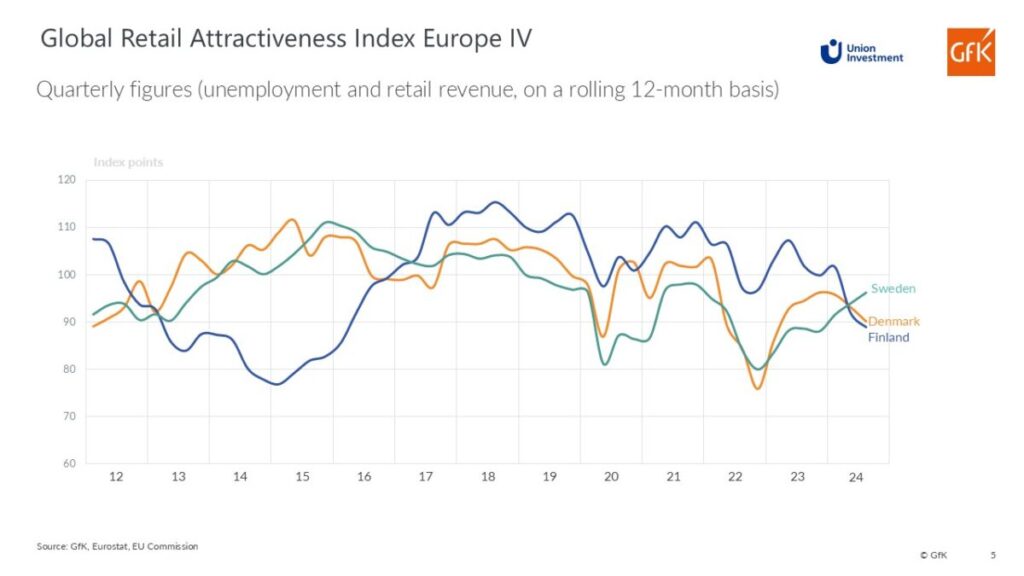
Click to enlarge
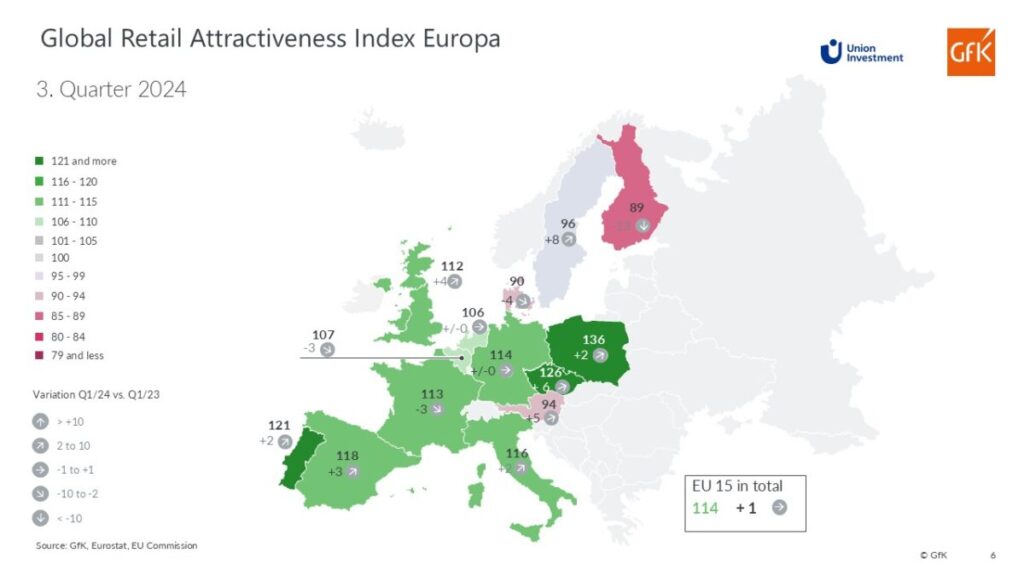
Click to enlarge
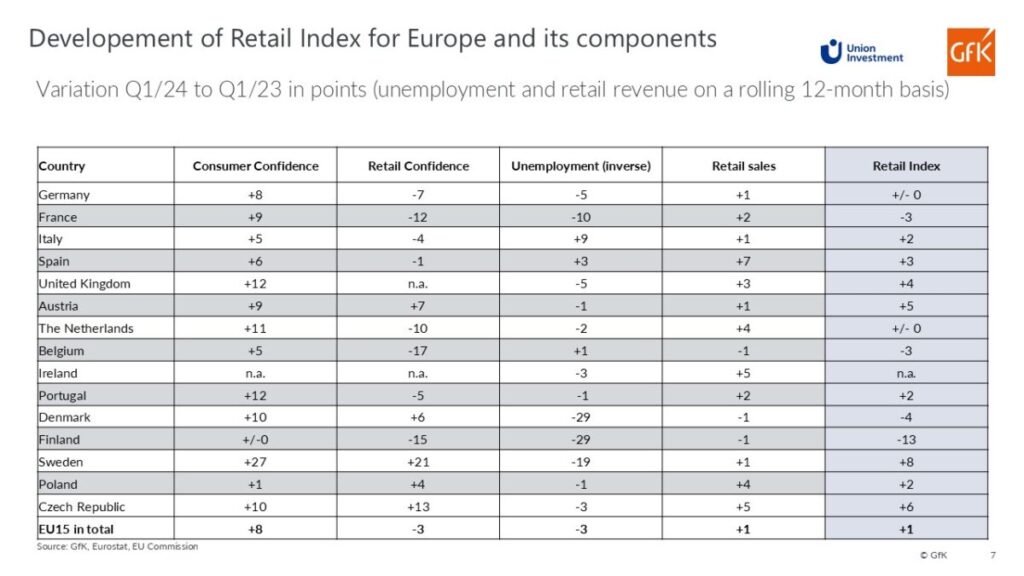
Click to enlarge
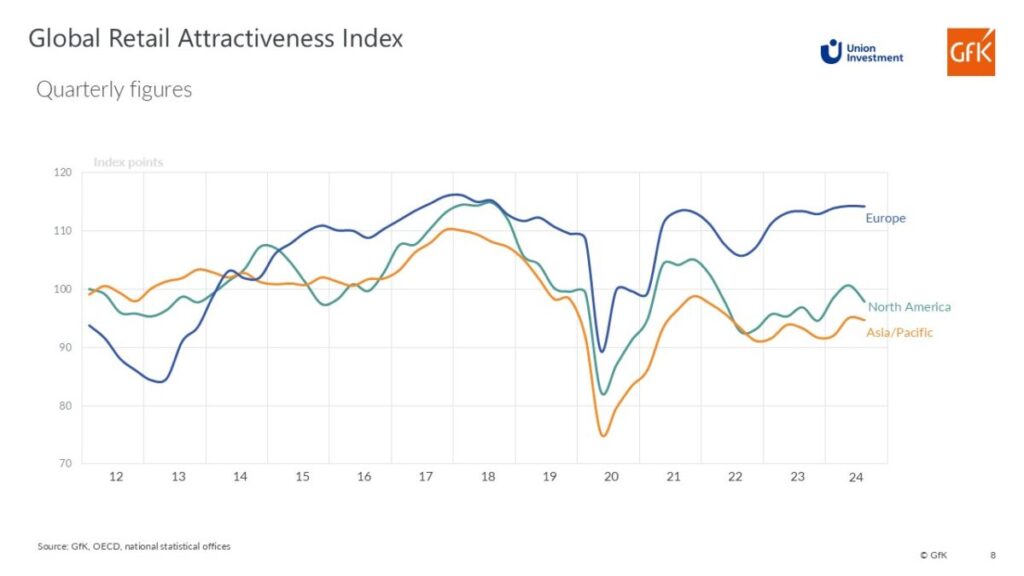
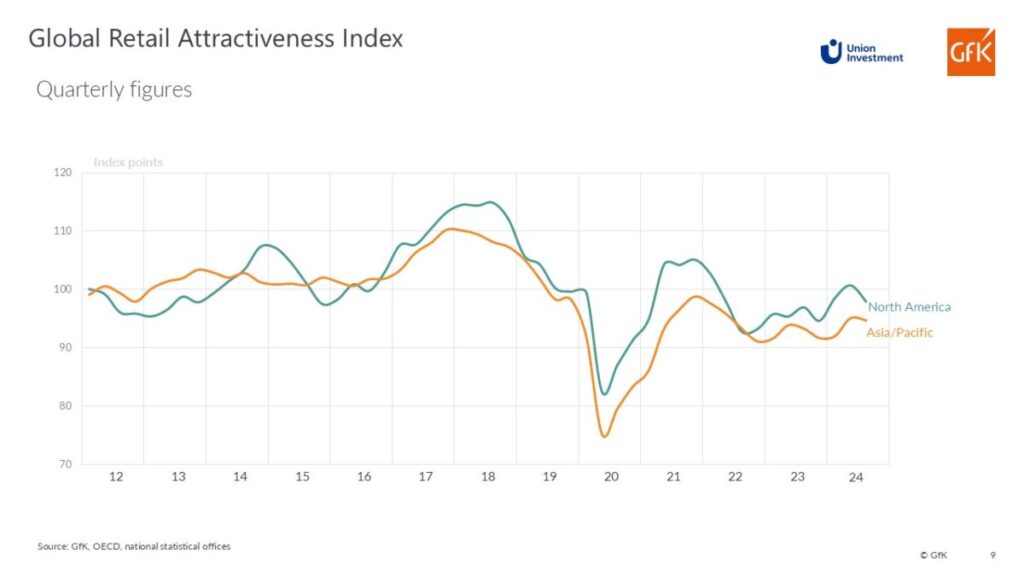
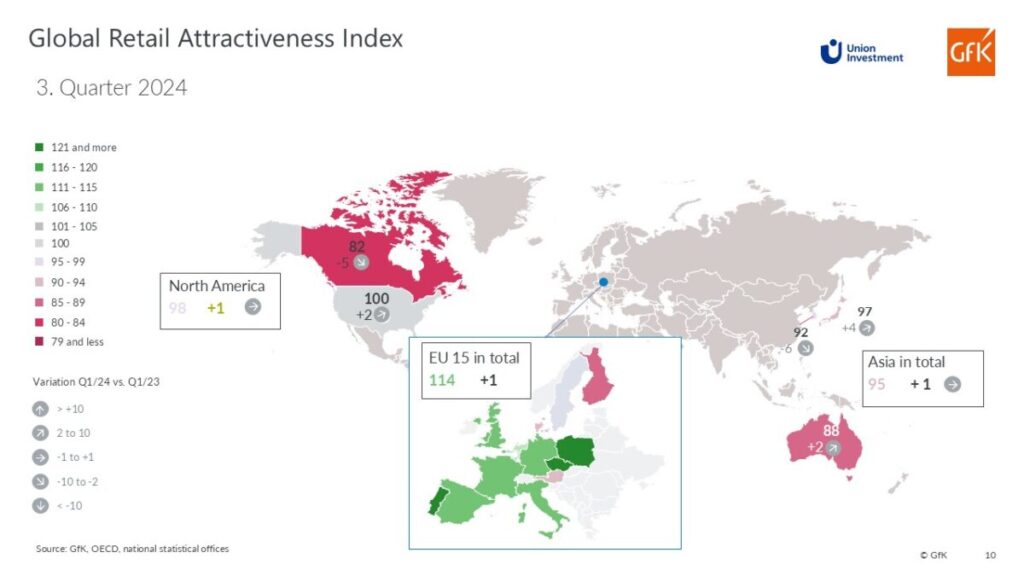
Methodology
Union Investment’s Global Retail Attractiveness Index (GRAI) measures the attractiveness of retail markets across 20 countries in Europe, North America, and the Asia-Pacific region. An index value of 100 points represents average performance. The EU-15 index combines the indexes for the following EU countries, weighted according to their respective population size: Sweden, Finland, Denmark, Germany, France, Italy, Spain, Austria, the Netherlands, Belgium, Ireland, Portugal, Poland and the Czech Republic, plus the United Kingdom. The North America index comprises the US and Canada, while the Asia-Pacific index covers Japan, South Korea and Australia.
Compiled every six months by market research company GfK, the Global Retail Attractiveness Index consists of two sentiment indicators and two data-based indicators. All four factors are weighted equally in the index, at 25 percent each. The index reflects consumer confidence as well as business retail confidence. As quantitative input factors, the GRAI incorporates changes in the unemployment rate and retail sales performance (rolling 12 months). After standardization and transformation, each input factor has an average value of 100 points and a possible value range of 0 to 200 points. The index is based on the latest data from GfK, the European Commission, the OECD, Trading Economics, Eurostat, and the respective national statistical offices. The changes indicated refer to the corresponding prior-year period (Q3 2023).
